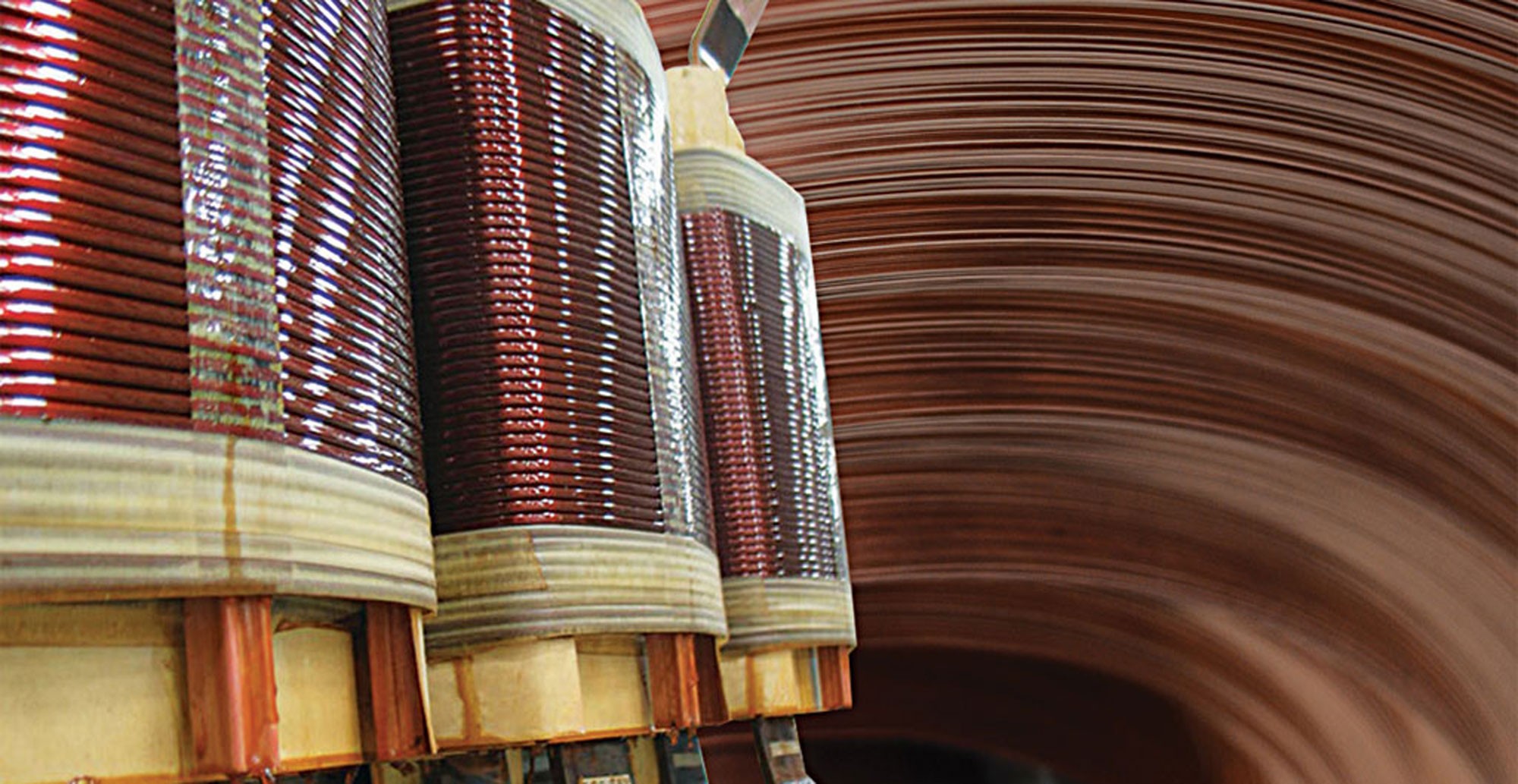Why copper is material of choice in transformer
By EPR Magazine Editorial February 11, 2017 12:13 pm IST
By EPR Magazine Editorial February 11, 2017 12:13 pm IST

Copper is the material of choice for power transformer conductors due to its superior short-circuit withstand capabilities
Basic physics
It is a basic principle of electromagnetic induction that electric current flows in a closed coil placed within a varying magnetic field. This current produces a secondary magnetic field in its own turn. The two magnetic fields repel each other and consequently the conductors in the coil experience a force that is proportional to the product of the two field strengths.
In a transformer, the principal magnetic field is itself set up by the flow of current in the primary coil. The secondary current, and therefore the secondary magnetic field, is proportional to the primary current. Therefore the forces mutually experienced by the coils are proportional to the square of either current. This means that under short-circuit conditions the forces experienced by the windings are two orders of magnitude higher than at rated currents.
In core type transformers, these forces act radially, tending to compress a coil and reduce its axial length. In shell type constructions the forces act at a perpendicular to the coil surface and tend to reduce its radial width.
Failure modes
If a power transformer is not designed and built properly, external short-circuits can cause significant weakening of its active parts, thus reducing its reliability, even if there is no immediate internal breakdown. Conductors can displace and stretch, coils can distort, bulge, buckle, telescope, tilt or rupture leading to broken insulation and thus to inter-turn short-circuits. Mechanical failures of the insulation can occur due to motion between conductors and spacers. Winding end supports can collapse.
Design and manufacturing practice
Of the many elements that go into the design and manufacture of power transformers in order to improve their short-circuit withstand capabilities, the choice of conductor material is the most important, as its mechanical properties, such as yield strength and modulus of elasticity, are critical to performance.
The various costs incurred during the long life of a transformer can be broadly categorised into purchase, operating and end-of-life costs. Of these, the operating costs – principally comprising the cost of energy losses in the transformer – are dominant. Therefore the astute purchaser will give a high weightage to the transformer’s energy performance in his decisions and will not base these on direct costs alone.
Transformer designers have a mix of options available for improving energy performance – principally the use of larger core and conductor cross-sections, or a lower loss core material, or a better conductor, i.e. copper. The optimisation of this mix is done on an ongoing basis by designers and manufacturers, based on relative material costs at the given time and the specific conditions of procurement on energy performance. This is the reason for the variety of transformer designs seen in the market.
References
1. Short Circuit Duty of Power Transformers: GiorgoBertagnolli
2. State of the Art on the Use of Copper and Aluminium Conductors in Distribution Transformers Manufacturing: R. Salustiano& M. L. B. Martínez Federal University of Itajubá– Lat-Efei
(Contributed by: International Copper Association India)
We use cookies to personalize your experience. By continuing to visit this website you agree to our Terms & Conditions, Privacy Policy and Cookie Policy.